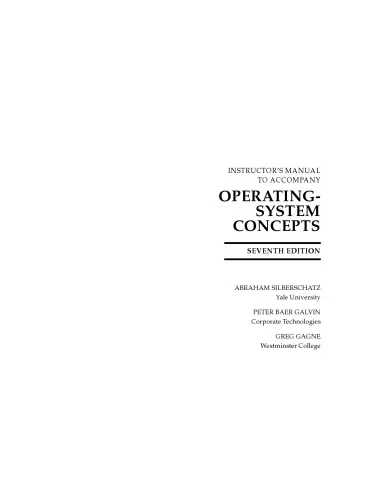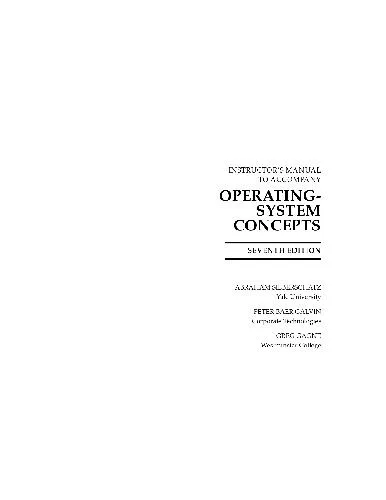Principles of Computer System Design: An Introduction
4.5
Reviews from our users

You Can Ask your questions from this book's AI after Login
Each download or ask from book AI costs 2 points. To earn more free points, please visit the Points Guide Page and complete some valuable actions.Related Refrences:
Introduction to "Principles of Computer System Design: An Introduction"
Authored by Jerome H. Saltzer and M. Frans Kaashoek, "Principles of Computer System Design: An Introduction" is a comprehensive guide that delves into the fundamental concepts and principles underpinning the design of computer systems. This introductory text aims to impart a deep understanding of the design choices and trade-offs inherent in building robust, scalable, and efficient computer systems.
Detailed Summary of the Book
The book is structured to provide readers with a systematic exploration of computer system design principles. Saltzer and Kaashoek approach the subject methodically, dissecting system design into modular components and elucidating the intricate interplay between hardware, software, and system architecture.
Starting with an exploration of the core abstractions that define computer systems, the book progresses through topics such as naming and binding, the role of communication in system design, fault tolerance, and atomicity. It incorporates case studies and practical examples to illustrate how abstract concepts are applied in real-world systems, thus bridging the gap between theory and practice.
Readers are immersed in the practical aspects of designing system architectures and the physics of information flow, with careful attention to the subtleties of performance enhancements and optimization techniques. Each chapter builds upon the last, crafting a cohesive narrative that not only educates but also inspires new avenues of thought among system designers.
Key Takeaways
- Understanding the importance of modularity and abstraction in system design.
- Insight into the challenges and solutions related to naming and binding within computer systems.
- Approaches to enhancing system reliability through fault tolerance and redundancy.
- Techniques to achieve atomicity and ensure consistency in concurrent operations.
- Best practices for optimizing system performance without compromising stability or scalability.
Famous Quotes from the Book
"Complexity kills. It sucks the life out of developers, it makes products difficult to plan, build, and test."
"Every layer of abstraction has the potential to both illuminate and obscure."
"Successful systems are usually a healthy balance between clever insights and engineering trade-offs."
Why This Book Matters
The "Principles of Computer System Design: An Introduction" stands as an essential text for both students and practitioners of computer science and engineering. Its emphasis on principle-based learning equips readers with the tools needed to tackle contemporary challenges in system design and development.
By elucidating the core principles that define and drive computer systems, this book lays the foundation for innovative thinking and problem-solving. It is particularly valued for its clear presentation of complex ideas and its balance of theoretical rigor with practical application.
In a rapidly evolving technological landscape, understanding the principles that guide system design is critical for developing solutions that are not only effective but also sustainable. As such, this book is a vital resource for anyone committed to excellence in the engineering of computer systems.
Free Direct Download
You Can Download this book after Login
Accessing books through legal platforms and public libraries not only supports the rights of authors and publishers but also contributes to the sustainability of reading culture. Before downloading, please take a moment to consider these options.
Find this book on other platforms:
WorldCat helps you find books in libraries worldwide.
See ratings, reviews, and discussions on Goodreads.
Find and buy rare or used books on AbeBooks.
1686
بازدید4.5
امتیاز0
نظر98%
رضایتReviews:
4.5
Based on 0 users review
Questions & Answers
Ask questions about this book or help others by answering
No questions yet. Be the first to ask!







